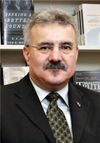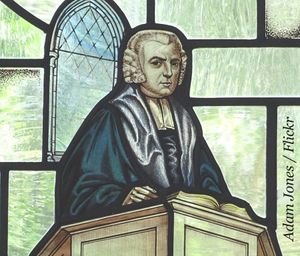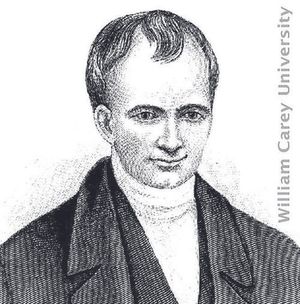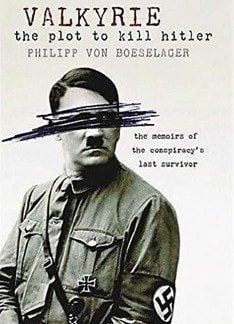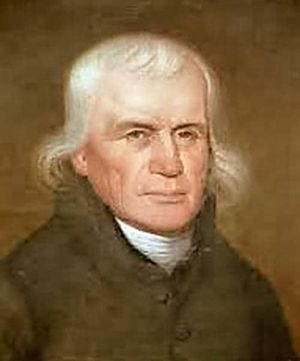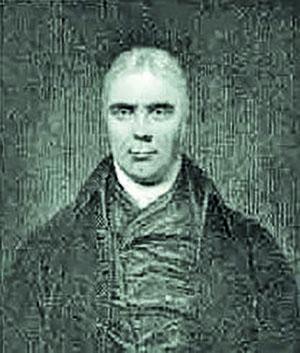It frequently happens that God, prior to doing a great work of revival and renewal among a community of his people, raises up forerunners and heralds of the work.
The best biblical example of this was John the Baptist, whose heart-searching message of repentance prepared the way for the public appearance of Jesus the Messiah and the new covenant established through his death.
The sixteenth-century revival of biblical truth – the Reformation – provides another illustration of this fact. This time the forerunners were men such as John Wycliffe (d.1384) – the so-called ‘Morning star of the Reformation’ – and Jan Hus (d.1415), cruelly martyred for his loyalty to biblical convictions.
Forerunner in prayer
The same holds true for the Great Awakening in America. In his Boston study, the Congregationalist pastor Cotton Mather (1663-1728) – whom American historian W. U. Solberg has recently described as ‘a mountain peak on the early American intellectual and theological landscape’ – spent days praying for the revival that he never saw.
He believed fervently that the vitality of the church in any era depends, in the final analysis, on the Holy Spirit’s sovereign power.
He thus maintained that the most significant practical response to the spiritual decline of his day was concerted prayer. As he stated in The Nets of Salvation (1704): ‘Praying for souls is a main stroke in the winning of souls. If once the Spirit of Grace be poured out upon a soul, that soul is won immediately…
‘Yea, who can tell, how far the prayers of the saints, and of a few saints, may prevail with heaven to obtain that grace, that shall win whole peoples and kingdoms to serve the Lord?…
‘It may be, the nations of the world would quickly be won from the idolatries of paganism, and the impostures of Mahomet, if a Spirit of Prayer, were at work among the people of God.’
Rising hunger
A later booklet from Mather’s pen, Private Meetings Animated & Regulated,published in 1706, encouraged believers to meet in small groups so that, among other things, ‘their fervent supplications’ would hopefully result in ‘the Spirit of Grace [being] mightily poured out upon the rising generation’.
In this tract for the times, Mather recommended bimonthly meetings in which the whole evening could be devoted ‘unto supplications for the conversion and salvation of the rising generation in the land; and particularly for the success of the gospel in that congregation’ to which the members of the prayer meeting belonged.
Mather died in 1728, a few years before revival came to New England and Great Britain. Yet he typifies a rising hunger among God’s people in the transatlantic British community to see God move in revival in their society, and translated that longing into prayer.
Years of preparation
Another key forerunner has frequently been forgotten – Theodore Jacob Frelinghuysen (or Freylinghuysen) (1691-c.1747). Speaking of the Great Awakening, George Whitefield (1714-1770) said of Freling-huysen: ‘He is a worthy old soldier of Jesus Christ, and was the beginner of the great work which I trust the Lord is carrying on in these parts’.
Although Frelinghuysen’s forebears were Lutherans, he was born into the home of a German Reformed pastor, Johan Heinrich Frelinghaus. Johan’s father, also named Johan, had embraced Reformed thought in 1669.
Raised in the Reformed faith, therefore, Frelinghuysen first took communion at his father’s church in Hagen, Westphalia (a region adjoining the Netherlands), in the spring of 1709.
Two years later, he enrolled at the University of Lingen, then in the Netherlands, to study theology and prepare himself for gospel ministry.
At Lingen the dominant theological perspective was that of Gisbertus Voetius (1589-1676), an ardent advocate of heart-religion whose followers, it was said, ‘dressed plainly and lived moderately’.
Voetius’ theology stressed the new birth and, as a fruit of that experience, holy living.
Frelinghuysen mastered Dutch before leaving Lingen in 1717, and preached for the first time in that language.
He also steeped himself in the biblical languages of Greek and Hebrew, and even found time to master Aramaic and Syriac.
First pastorate
Frelinghuysen’s first pastorate was at a tiny village called Loegumer Voorwerk, in East Friesland, not far from Emden, the commercial capital of the area.
He arrived in the village in the late autumn of 1717. Pietism had taken deep root in the surrounding area, and this East Frisian heart-religion would have a significant impact on the piety of Frelinghuysen.
Though he was in this pastorate only fourteen months, he had time to develop a solid circle of friends – men who stood by him when he went through deep trials in America.
On Christmas Day 1717 a massive flood engulfed East Friesland, where nearly seven thousand people were drowned and thousands more were left homeless.
As a result, the church was no longer able to pay Frelinghuysen a salary, and he left in February 1719.
Vital religion
Initially he took a teaching position at a Latin school in Enkhuizen, North Holland. He was there only a few months, however, before he was invited by the Classis of Amsterdam to take a pastoral charge in New Jersey in the New World.
When told the name of the place to which he was being called – Rarethans (Raritan) – he thought the locale must be in Flanders or another Dutch province. He agreed to go before he realised that the pastoral charge was actually on the other side of the Atlantic!
Though he could have easily used his misunderstanding as an excuse not to go, he recognised the providential hand of the sovereign God in this experience.
He took Psalm 15:4 as God’s word to him: ‘[God] honours those who fear the Lord; who swears to his own hurt and does not change’ (ESV).
Also influential in Frelinghuysen’s decision was a meeting with a Dutch Pietist minister by the name of Sicco Tjadde (1693-1736), who urged him to ‘give up the prospect of a successful career in the Old World in order to spread vital religion in the New’.
So it was that, on 4 September 1719, the twenty-eight-year-old pastor boarded a ship, the King George, bound for New York, arriving four months later at the beginning of January 1720.
Dutch America
The Dutch had established a major colony in North America in 1625 on Manhattan Island. Initially it flourished and was known as New Amsterdam, with a fort built at the southern tip of the island, roughly where Battery Park is now.
A Dutch Reformed Church was subsequently built nearby in 1642. Unlike the English Puritans, the Dutch Reformed ministers made no efforts to evangelise the native peoples of the area.
By 1660 the Dutch colony had about 5,000 inhabitants, far less than the 33,000 or so in Puritan New England. Dutch rule effectively ended in 1664 when the colony was taken by the English.
Dutch church life continued, however. By the time Frelinghuysen arrived from Holland, there were Dutch congregations not only in what was now called New York, but also in New Jersey.
It was four tiny Dutch Reformed congregations in New Jersey’s Raritan Valley that had called Frelinghuysen.
Conflict in New York
Frelinghuysen’s pietism came into conflict with the clergy in Manhattan almost immediately. Asked to preach in the city the Sunday after his arrival, a good number of those who heard him were upset by what they called his ‘howling prayers’ – probably a reference to the passion evident in his praying.
It was also noticed that he did not lead the congregation in a public recitation of the Lord’s Prayer. When questioned about this omission, Frelinghuysen indicated that he saw the use of this prayer in divine worship as a matter of little consequence. What was vital was the praying going in the heart.
If the Dutch New Yorkers were displeased with Frelinghuysen’s zeal, he on his part was convinced that the Dutch churches on Manhattan lacked the root of genuine spirituality. The situation was little better in the churches that had called him, as Frelinghuysen soon discovered.
The new birth, practical holiness and family worship were all but non-existent in the Dutch churches in the Raritan Valley. We shall see next month how Freling-huysen’s ministry was initially opposed with much fierceness – but how God made his labours fruitful in spiritual awakening and the salvation of sinners.
With hindsight, we can see that God was preparing the way for the Great Awakening and the blessings that attended the preaching of George Whitefield and Jonathan Edwards (1703-1758).

